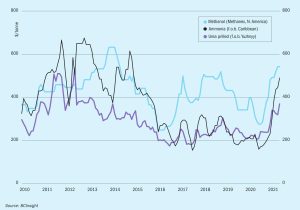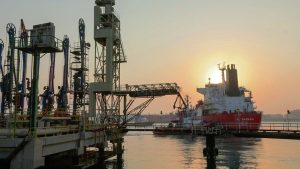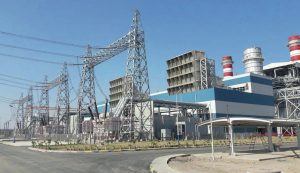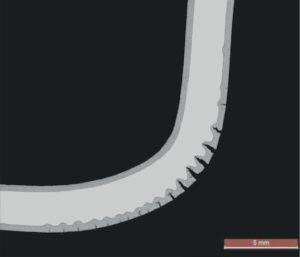
Ammonia and sulphur market trends
Ammonia and sulphur, as essential raw materials, underpin and drive fertilizer production costs. A steep and sustained rally has seen prices for both commodities reach new heights in recent months.

Ammonia and sulphur, as essential raw materials, underpin and drive fertilizer production costs. A steep and sustained rally has seen prices for both commodities reach new heights in recent months.

The delivery of nitrogen in nitrate form can deliver superior yields and quality in arable, fruit and vegetable crops. Because of this, production and consumption of the principal nitrate fertilizers – ammonium nitrate (AN), calcium ammonium nitrate (CAN), urea ammonium nitrate (UAN), potassium nitrate (NOP) and calcium nitrate (CN) – continue to grow.

Market Insight courtesy of Argus Media
Preliminary engineering work has started on a renewable powerto-fertilizer plant in Kenya.

In 2019, the EU fertilizer market was valued at around e17 billion, with France, Germany and former member state the UK together representing 40 percent of this total.

Market Insight courtesy of Argus Media

Ammonia markets continue to be dominated by unplanned outages in Saudi Arabia (where the SAFCO 4 and one of the Ma’aden ammonia plants are both down, removing 2.3 million t/a of merchant ammonia from the market). This comes on top of other shutdowns earlier in the year on Trinidad, in the US and Australia.

Plans to decarbonise power production and shipping are leading to increasing interest in using ammonia as a fuel, but technical and economic barriers still remain to be overcome.

Maire Tecnimont SpA says that its subsidiaries MET Development, Stamicarbon and NextChem have collectively begun work on a renewable power-to-fertilizer plant in Kenya. MET Development has signed an agreement with Oserian Development Company for the development of the plant at the Oserian Two lakes Industrial Park, on the southern banks of Lake Naivasha, 100 km north of Nairobi.

The internals of ammonia synthesis converters are generally made of austenitic stainless steel to withstand the harsh operating conditions (high temperature, high pressure and synthesis gas containing hydrogen and ammonia). Since nitriding is the most critical material degradation for the converter internals, Casale has set up a large nitriding analysis campaign. In the last decade, samples of materials operated under different pressures and temperatures and for different time spans have been tested and analysed. The data obtained has been used to increase nitriding knowledge and to establish a correlation to predict nitriding rate to allow the most suitable material and relevant thickness to be selected. L. Redaelli and G. Deodato of Casale report on how this correlation was established and provide valuable insight on this phenomenon and how to predict and control it.